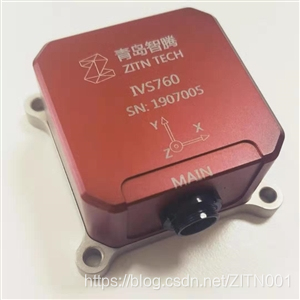Currently INS introduce several types (one article to understand)
Inertial Navigation:
inertial navigation system generally by the inertial measuring device, a computer, etc. to control a display apparatus comprising:
three degrees of freedom gyroscopes to measure the rotation of the vehicle motion three
three accelerometers for measuring the aircraft
three translational movement acceleration.
The computer calculates the speed and position of the aircraft based on the acceleration data of the measured signals. Control the display to display various navigation parameters, and function. This navigation system establishes a coordinate system in accordance with the output of the gyro, calculates the speed and position of the vehicle navigation coordinate system based on the count output of acceleration solution.
\
An inertial navigation system does not rely on external information, nor to external radiation energy autonomous navigation system. Its working environment includes not only the air, the ground, but also underwater. The basic principle of inertial navigation is based on Newton's laws of mechanics, by measuring the acceleration vector in the inertial reference system, it will be integrated over time, and transforms it into the navigation coordinate system, it is possible to obtain a navigation coordinate system information rate, yaw angle and position.
Visual navigation principle:
the visual navigation is brushing the traveling path of the AGV large contrast with the ground color of paint or paste ribbon large color contrast, FIG sensor mounted camera images continuously photographed images stored in the comparison AGV, offset signal to the drive control system, a control system has been calculated to correct the running direction of the AGV, the AGV navigation achieved. Visual navigation advantages: AGV positioning accuracy, a better visual navigation flexibility to change or expand also easier path, the laying path is relatively simple, the guiding principles are equally simple and reliable, easy to control communication, without interference of the sound and light, than the investment cost The same laser navigation is much lower, but slightly more expensive than tape navigation.
Electromagnetic Navigation:
Electromagnetic navigation is one of the more traditional navigation methods, many systems still use the current, which is a metal wire embedded in the travel path of the AGV, and loaded on a metal wire pilot tone by identifying the frequency of the pilot to achieve the AGV navigation. Electromagnetic navigation advantages: covert guidewire difficult to pollution and damage, and the guiding principle is simple, reliable, easy to control communication, without interference of the sound and light, much lower investment costs than laser navigation; electromagnetic navigation drawbacks: the path change or expand more difficult, guide wire laying relatively difficult.
Laser Navigation:
laser navigation around the mounting location is in the path of the AGV accurate reflection plate AGV by emitting a laser beam, the laser beam while collecting reflected by the reflecting plate, to determine its current position and orientation. Calculating the initial position of the AGV --AGV carriage stops moving; laser scanner can be measured at least four beams, i.e., at least, "see" the reflector plate 4; accurately known positions of all of the reflecting plate (X, Y); AGV continuous position calculation - the motion model estimated current car position, based on the estimated new position associated with the reflecting plate, the reflecting plate according to the associated corrected self-position, the next action AGV amended accordingly.
Laser navigation advantages: precise positioning AGV, no other ground-location facility; with the flexibility to change the path; laser navigation disadvantages: due to the control of complex and expensive laser technology, high investment costs can not be obstacles between the reflective sheet and the AGV laser sensor, not there are occasions affect the air for logistics.

Navigation GPS coordinates:
GPS is a constellation of space coordinates, three parts control and user equipment ground configuration. GPS coordinate measuring technology to quickly, efficiently and accurately provide point, precise three-dimensional coordinates of the line, polygon features as well as other relevant information, all-weather, high precision, automation, high efficiency and other notable features, widely used in military, civilian traffic (ship , airplanes, cars, etc.) navigation, geodesy, photogrammetry, field trips adventure, land-use surveys, precision agriculture and daily life (personnel tracking, entertainment) and other various fields.
The basic principle of GPS coordinates are: satellite continuously transmits its own ephemeris parameters and time information of the user after receiving the information obtained three-dimensional position of the receiver calculated in the moving direction and velocity and time information
